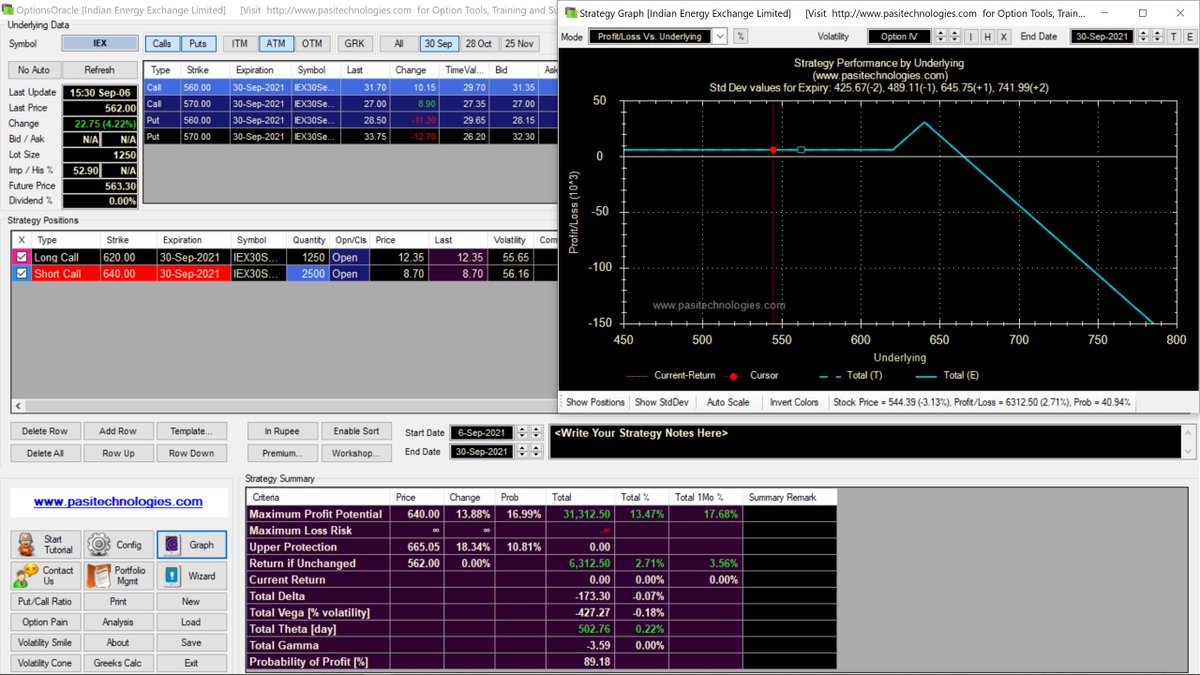
Tried something new today. I feel IEX has run up too much and too fast. So did a CE Ratio (bought 1x620CE and sold 2x640CE) for a credit of 6312. No downside Risk and upper BE of 665. Hope to take off the 620CE at some stage which should result in a healthy Profit. 

RoC of 4% if Price remains below 620-at which stage I will adjust and a POP of 90%.
Sold a 520PE for 9
Sold a 530PE for 9
If it crosses 600, will use some of the credit collected from the sold PE to move the 2x CE sold up a little- maybe to 650 or 660
Not looking bad at all! In fact if it stays around 590 levels, I might well sell some more 640/660 Ratio Spreads for around 6 per lot tomorrow. 

• • •
Missing some Tweet in this thread? You can try to
force a refresh



